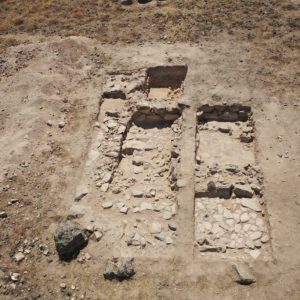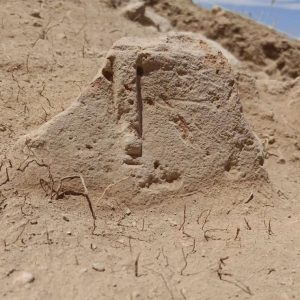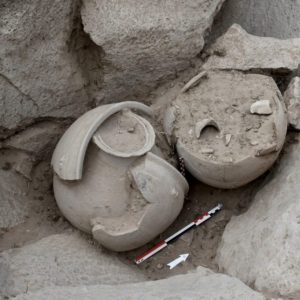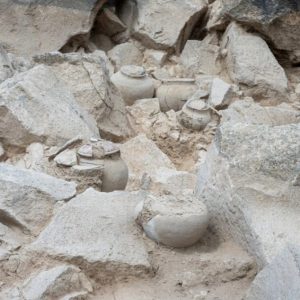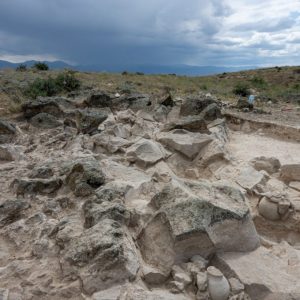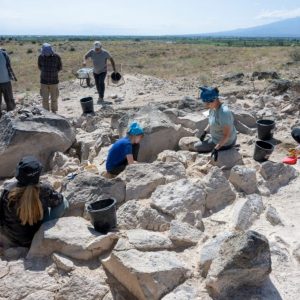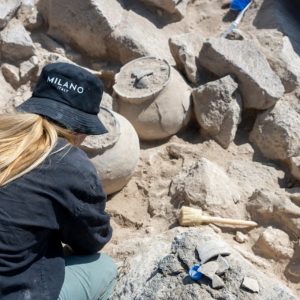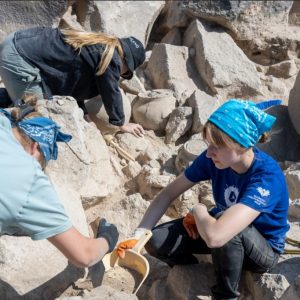An Armenian-Polish archaeological expedition, led among others by Dr Mateusz Iskra from the Polish Centre of Mediterranean Archaeology, University of Warsaw, has discovered a unique idol figure and the largest urn-field cemetery in Armenia. The finds from Argishtikhinili shed new light on the daily life and beliefs of the inhabitants of the Kingdom of Urartu 2,500 years ago.
The results of the second season of research by the Armenian-Polish expedition in the fortified city of the Kingdom of Urartu in the South Caucasus have been announced. The work in Argishtikhinili is led by Dr Mateusz Iskra from the Polish Centre of Mediterranean Archaeology (PCMA), University of Warsaw, and Hasmik Simonyan from the Institute of Archaeology and Ethnography of the National Academy of Sciences of Armenia and the Service for the Protection of the Historical Environment and Cultural Museum-Reservations of Armenia.
„We were surprised by the excellent state of preservation of these structures. In many places, floors paved with mud-brick and stone paving have survived intact,” says Dr Mateusz Iskra, Head of the Department of Near Eastern Studies at the PCMA UW.
The research was conducted on St. David’s Hill (Surb Davti Blur) – one of two hills where the remains of the ancient city are present. One part of the season’s research focused on large, terraced houses, with ground-floor areas reaching around 400 m², preliminarily dated to the late 7th–6th century BCE. Thanks to these discoveries, archaeologists obtained information that allows them to reconstruct some aspects of the daily life of the ancient inhabitants.
Stone idol
One of the most interesting discoveries of this research season was a stone figure found near the wall of one of the houses. The idol, approximately half a meter tall, was made of volcanic tuff.
„Leaning against the side of a stone box, we found – to our surprise – a stone with carved human features. It was a figurine-idol, preserved in its original position,” emphasises Dr Iskra.
As the discoverers explain, similar idols are known from other sites in Armenia. They are believed to be associated with ancestor or fertility cults.
To better understand the function of the Argishtikhinili idol, researchers are planning chemical analyses of the stone chest’s contents. They hope to detect traces of substances that will help decipher its meaning.
Urn-field cemetery
The expedition’s second groundbreaking discovery is an urn-field cemetery with dozens of cremation burials.
„The ashes of the deceased had been carefully placed in ceramic vessels, often accompanied by grave goods,” explains Hasmik Simonyan, who specialises in bioarcheology. She emphasises that this is an extraordinary find on a national scale – likely the largest and best-preserved urn-field cemetery discovered in Armenia to date.
The excellent state of preservation of the urns allows researchers to better understand the burial customs and rituals of the community inhabiting areas strongly influenced by Urartian culture. This discovery opens up new avenues for research into the social structure, beliefs, and regional contacts of the local population in the 1st millennium BCE.
